

| Region rejsu : Morze Śródziemne |
| Firma : MSC Cruises |
| Statek : MSC Armonia |
| Data rozpoczęcia : pt. 28 lis 2025 |
| Data zakończenia : niedz. 14 gru 2025 |
| Liczba nocy : 16 nocy |
| Dzień | Data | Port | Wypłynięcie | Odpłynięcie |
|---|---|---|---|---|
| 1 | 28.11 pt. | Rzym (Civitavecchia) / Włochy | 19:00 | |
| 2 | 29.11 sob. | Dzień na morzu / Morze | ||
| 3 | 30.11 niedz. | Barcelona / Hiszpania | 07:00 | 16:00 |
| 4 | 1.12 pon. | Dzień na morzu / Morze | ||
| 5 | 2.12 wt. | Casablanka / Morocco | 09:00 | 22:00 |
| 6 | 3.12 śr. | Dzień na morzu / Morze | ||
| 7 | 4.12 czw. | Santa Cruz, około. Teneryfa (Wyspy Kanaryjskie) / Hiszpania | 09:00 | 16:00 |
| 8 | 5.12 pt. | Dzień na morzu / Morze | ||
| 9 | 6.12 sob. | Dzień na morzu / Morze | ||
| 10 | 7.12 niedz. | Dzień na morzu / Morze | ||
| 11 | 8.12 pon. | Dzień na morzu / Morze | ||
| 12 | 9.12 wt. | Dzień na morzu / Morze | ||
| 13 | 10.12 śr. | Dzień na morzu / Morze | ||
| 14 | 11.12 czw. | Salwador / Brazylia | 08:00 | 17:00 |
| 15 | 12.12 pt. | Dzień na morzu / Morze | ||
| 16 | 13.12 sob. | Armacao dos Buzios / Brazylia | 09:00 | 18:00 |
| 17 | 14.12 niedz. | Rio de Janeiro / Brazylia | 08:00 |
Zakwaterowanie w kabinie wybranej kategorii
Wyżywienie w restauracji (bufecie) w formie „szwedzkiego stołu”, obejmujące śniadanie, obiad i kolację, a także przekąski w kawiarni i pizzerii przez cały dzień. Woda, soki, herbata i kawa z automatów dostępne w bufecie bezpłatnie przez 24 godziny.
Wyżywienie w głównej restauracji „a la carte”. Zazwyczaj na wszystkich statkach znajdują się dwie lub trzy główne restauracje z obsługą kelnerską według menu. Potrawy w takich restauracjach są bardziej wykwintne i urozmaicone niż w bufecie. Napoje zamawiane są za dodatkową opłatą.
Rozrywka na pokładzie, taka jak animacje, warsztaty, aerobik, wieczorne przedstawienia w teatrze, muzyka na żywo w barach, dyskoteki.
Korzystanie ze wszystkich ogólnodostępnych stref statku: centrum fitness (siłownia), baseny, jacuzzi przy basenach, aquapark, biblioteka, mini-kluby dla dzieci.
Usługi opiekunów w mini-klubach dla dzieci od 6 miesięcy do 17 lat.
Gry na boiskach sportowych, w tym tenis, mini-piłka nożna, koszykówka, badminton, mini-golf i inne.
Korzystanie ze środków pływających podczas załadunku lub zejścia na ląd w portach, do których statek nie wpływa.
Transport bagażu na początku i na końcu rejsu.
Opłata serwisowa – 12 € dziennie od osoby.
W zależności od kategorii kabiny mogą Państwo otrzymać dodatkowe usługi bezpłatnie. Na przykład napoje ALL INCLUSIVE w barach i restauracjach, obsługę w kabinie z bezpłatną dostawą 24 godziny na dobę, korzystanie z centrum spa.
Ważne: Firma MSC ma prawo zamienić kabinę na taką samej kategorii lub wyższej. MSC dołoży wszelkich starań, aby uniknąć zmiany kabiny.
Dodatkowe koszty:
• ubezpieczenie (ubezpieczenie medyczne, ubezpieczenie od rezygnacji z podróży)
• przelot samolotem lub podróż koleją (koszty transportu do portu początkowego i z portu końcowego rejsu)
• transfery (z lotniska/dworca kolejowego do portu morskiego i z powrotem)
• wycieczki fakultatywne
• rezerwacja hoteli przed lub po rejsie, jeśli chcą Państwo przedłużyć pobyt na lądzie
Dodatkowo płatne na statku:
• korzystanie z alternatywnych barów i restauracji
• usługi centrów spa, fryzjerów, salonów piękności
• usługi medyczne
• pralnia, prasowanie bielizny
• kasyno
• automaty do gier i inne w zależności od statku
Przy każdym zakupie towarów na statku w barach, restauracjach, sklepach oraz przy korzystaniu z usług w centrum spa, salonie fryzjerskim itp. zostanie naliczona dodatkowa opłata serwisowa, która średnio wynosi 15% wartości zakupu.
W standardową cenę rejsu zazwyczaj nie jest wliczony pakiet napojów. Mogą Państwo dodatkowo wybrać i dodać do swojego rejsu odpowiedni pakiet napojów.
Pakiety napojów na sezony: „Zima 2024–2025”, „Lato 2025”, „Zima 2025–2026”, „Lato 2026”, „Zima 2026–2027”
Pakiety napojów muszą być zarezerwowane przez wszystkich gości zakwaterowanych w tej samej kajucie, w tym dzieci powyżej 3 lat (dla nich rezerwowany jest MINORS PACKAGE – pakiet dla dzieci).
Miejsca przy wspólnym stole w głównej restauracji podczas kolacji są możliwe tylko wtedy, gdy wszyscy goście mają zarezerwowany ten sam pakiet napojów (lub nikt z nich nie ma pakietu).
Pakiety przeznaczone są wyłącznie do użytku osobistego, karta rejsowa nie może być przekazywana innym osobom. Przy każdym zamówieniu można poprosić tylko o jeden napój. W przypadku naruszenia zasad korzystania z pakietu, linia rejsowa zastrzega sobie prawo do zablokowania pakietu bez zwrotu kosztów za niewykorzystane dni.
Pakiety obowiązują każdego dnia trwania rejsu i nie mogą być kupowane na pojedyncze dni.
Zgodnie z prawem Arabii Saudyjskiej, podczas postoju w portach Arabii Saudyjskiej napoje alkoholowe nie są serwowane (dostępne są tylko napoje bezalkoholowe). Napoje alkoholowe będą dostępne dopiero po wypłynięciu statku z portu i przebywaniu na morzu.
Cena pakietów napojów przy zakupie na pokładzie będzie wyższa niż przy rezerwacji rejsu.
Szczegółowa lista napojów wchodzących w skład pakietów będzie dostępna w menu barów na pokładzie statku.
Pakiety napojów obowiązują również na wyspach Sir Bani Yas i Ocean Cay.
Linia rejsowa zastrzega sobie prawo do zawieszenia działania pakietów napojów w dowolnym momencie.
Cena podana jest za dzień, za osobę.
Gdzie obowiązują:
Morze Śródziemne; Europa Północna; ZEA i Zatoka Perska; Wyspy Kanaryjskie; Karaiby z Fort-de-France; Rejsy dookoła świata
EASY PACKAGE (dla dorosłych od 18 lat)
Określony, ograniczony wybór napojów alkoholowych i bezalkoholowych serwowanych w kieliszkach:
Piwo (1 rodzaj) i piwo bezalkoholowe
Wino (białe, różowe, czerwone)
Koktajle alkoholowe i bezalkoholowe
Ograniczony wybór mocnych alkoholi
Napoje gazowane i soki
Klasyczne napoje gorące: espresso, americano, cappuccino, caffe latte, herbata
Woda mineralna w butelkach
Ograniczenie dotyczące napojów alkoholowych:
15 napojów dziennie (napoje bezalkoholowe – bez ograniczeń).
Szczegółowa lista napojów dostępna jest w menu barów na pokładzie statku.
Osoby chętne mogą skorzystać ze zniżki 7 € przy zakupie droższego napoju, który nie jest objęty pakietem Easy Package (do różnicy w cenie zostanie doliczona opłata serwisowa w wysokości 15%).
Gdzie obowiązuje:
24 godziny na dobę w wybranych barach na pokładzie, w głównych restauracjach oraz w restauracji bufetowej.
Gdzie nie obowiązuje:
W restauracjach specjalnych, w Venchi 1878, Jean-Philippe Maury, MSC Virtuosa Starship Club, MSC World Europa & America Coffee Emporium, MSC World Europa Raj Polo Tea Room.
Uwaga:
Pakiet muszą zarezerwować wszyscy goście zakwaterowani w tej samej kajucie lub podróżujący razem – wówczas miejsca w głównej restauracji będą przy wspólnym stole. Zasada ta dotyczy również dzieci od 3 roku życia, dla których kupowany jest MINORS PACKAGE (dla dzieci).
Do ceny pakietu nie są wliczone: minibar, napoje alkoholowe w butelkach, niektóre marki napojów, lody.
Ceny:
Rejsy od 1 do 4 dni – 40 €/dzień
Rejsy od 5 do 10 dni – 40 €/dzień
Rejsy od 11 dni i więcej – 36 €/dzień
EASY PLUS PACKAGE (dla dorosłych od 18 lat)
Szeroki wybór napojów alkoholowych i bezalkoholowych serwowanych w kieliszkach o wartości do 9 €:
Piwo lane, rzemieślnicze, butelkowe oraz piwo bezalkoholowe
Wino (białe, różowe, czerwone, a także musujące)
Napój dnia
Koktajle alkoholowe i bezalkoholowe
Mocne alkohole znanych marek
Napoje gazowane i soki
Szeroki wybór klasycznych napojów gorących: espresso, americano, cappuccino, caffe latte, kawa mrożona, herbata itp.
Woda mineralna w butelkach
Ograniczenie dotyczące napojów alkoholowych:
15 napojów dziennie (napoje bezalkoholowe – bez ograniczeń).
Pakiet Easy Plus Package daje 10% zniżki na zakup butelek wina na pokładzie.
Osoby chętne mogą skorzystać ze zniżki 9 € przy zakupie droższego napoju, który nie jest objęty pakietem Easy Plus Package (do różnicy w cenie zostanie doliczona opłata serwisowa w wysokości 15%).
Gdzie obowiązuje:
24 godziny na dobę w barach na pokładzie, w głównych restauracjach, w restauracji bufetowej oraz w restauracjach specjalnych.
Gdzie nie obowiązuje:
Venchi 1878, Jean-Philippe Maury oraz MSC Virtuosa Starship Club.
Uwaga:
Pakiet muszą zarezerwować wszyscy goście zakwaterowani w tej samej kajucie lub podróżujący razem – wówczas miejsca w głównej restauracji będą przy wspólnym stole. Zasada ta dotyczy również dzieci od 3 roku życia, dla których kupowany jest MINORS PACKAGE (dla dzieci).
Do ceny pakietu nie są wliczone: minibar, napoje alkoholowe w butelkach, niektóre marki napojów, lody.
Ceny:
Rejsy od 1 do 4 dni – 54 €/dzień
Rejsy od 5 do 10 dni – 54 €/dzień
Rejsy od 11 dni i więcej – 50 €/dzień
PREMIUM EXTRA PACKAGE (dla dorosłych od 18 lat)
Szeroki wybór napojów alkoholowych i bezalkoholowych serwowanych w kieliszkach o wartości do 14 €:
Piwo lane, rzemieślnicze, butelkowe i bezalkoholowe
Szeroki wybór win i szampanów
Napój dnia
Koktajle alkoholowe i bezalkoholowe
Mocne alkohole segmentu premium
Napoje gazowane i soki
Szeroki wybór klasycznych napojów gorących: espresso, americano, cappuccino, caffe latte, kawa mrożona, herbata itd.
Woda mineralna w butelkach
Ograniczenie dotyczące napojów alkoholowych:
15 napojów dziennie (napoje bezalkoholowe – bez ograniczeń).
Pakiet Premium Extra Package daje 25% zniżki na zakup butelek wina i szampana na pokładzie.
Gdzie obowiązuje:
24 godziny na dobę w barach na pokładzie, w głównych restauracjach, w restauracji bufetowej oraz w restauracjach alternatywnych.
Gdzie nie obowiązuje:
Venchi 1878, Jean-Philippe Maury oraz MSC Virtuosa Starship Club.
Uwaga:
Pakiet muszą zarezerwować wszyscy goście zakwaterowani w tej samej kabinie lub podróżujący razem; w takim przypadku w głównej restauracji zostanie przydzielony wspólny stół. Zasada ta dotyczy również dzieci od 3 roku życia – dla nich obowiązuje zakup pakietu MINORS PACKAGE.
Nie są wliczone w cenę: mini-bar, napoje alkoholowe w butelkach, niektóre marki napojów, lody.
Ceny:
Rejsy od 1 do 4 dni – 75 €/dzień
Rejsy od 5 do 10 dni – 75 €/dzień
Rejsy od 11 dni i więcej – 70 €/dzień
ALCOHOL-FREE PACKAGE (dla dorosłych od 18 lat)
Szeroki wybór napojów bezalkoholowych, gazowanych i energetycznych, woda mineralna w butelkach, soki owocowe, szeroki asortyment napojów kawowych, herbata oraz lody „na wynos”.
Gdzie obowiązuje:
24 godziny na dobę w wybranych barach na pokładzie, w głównych restauracjach oraz w restauracji bufetowej.
Gdzie nie obowiązuje:
W restauracjach alternatywnych, w Venchi 1878, Jean-Philippe Maury, MSC Virtuosa Starship Club.
Uwaga:
Pakiet muszą zarezerwować wszyscy goście zakwaterowani w tej samej kabinie lub podróżujący razem; w takim przypadku w głównej restauracji zostanie przydzielony wspólny stół. Zasada ta dotyczy również dzieci od 3 roku życia – dla nich obowiązuje zakup pakietu MINORS PACKAGE.
Nie są wliczone w cenę: mini-bar, napoje alkoholowe.
Ceny:
Rejsy od 1 do 4 dni – 26 €/dzień
Rejsy od 5 do 10 dni – 26 €/dzień
Rejsy od 11 dni i więcej – 24 €/dzień
MINORS PACKAGE (dla dzieci od 3 do 17 lat)
Szeroki wybór napojów bezalkoholowych, gazowanych i energetycznych, woda mineralna w butelkach, soki owocowe, szeroki asortyment napojów kawowych, herbata oraz lody „na wynos”.
Gdzie obowiązuje:
24 godziny na dobę w wybranych barach na pokładzie, w głównych restauracjach oraz w restauracji bufetowej.
Gdzie nie obowiązuje:
W restauracjach alternatywnych, w Venchi 1878, Jean-Philippe Maury, MSC Virtuosa Starship Club.
Uwaga:
Pakiet jest przeznaczony dla dzieci od 3 do 17 lat podróżujących w jednej kabinie z dorosłymi. Dorośli pasażerowie muszą wykupić pakiety napojów dla dorosłych.
Nie są wliczone w cenę: mini-bar, napoje alkoholowe.
Ceny:
Rejsy od 1 do 4 dni – 17 €/dzień
Rejsy od 5 do 10 dni – 17 €/dzień
Rejsy od 11 dni i więcej – 17 €/dzień
Karaiby z Miami; Ameryka Północna; Alaska
EASY PACKAGE (dla dorosłych od 21 lat)
Określony, ograniczony wybór napojów alkoholowych i bezalkoholowych serwowanych w kieliszkach:
Piwo (1 rodzaj) i piwo bezalkoholowe
Wino (białe, różowe, czerwone)
Koktajle alkoholowe i bezalkoholowe
Ograniczony wybór mocnych alkoholi
Napoje gazowane i soki
Klasyczne napoje gorące: espresso, americano, cappuccino, caffe latte, herbata
Woda mineralna w butelkach
Ograniczenie:
15 napojów alkoholowych dziennie (napoje bezalkoholowe – bez ograniczeń).
Szczegółowa lista napojów jest dostępna w menu barów na pokładzie statku.
Możliwość skorzystania ze zniżki 10 $ przy zakupie droższego napoju, niewchodzącego w skład Easy Package (do różnicy w cenie doliczana jest opłata serwisowa 18%).
Gdzie obowiązuje:
24 godziny na dobę w wybranych barach na pokładzie, w głównych restauracjach i w restauracji bufetowej.
Gdzie nie obowiązuje:
Restauracje alternatywne, Venchi 1878, Jean-Philippe Maury, MSC Virtuosa Starship Club, MSC World Europa & America Coffee Emporium, MSC World Europa Raj Polo Tea Room.
Uwaga:
Pakiet muszą wykupić wszyscy pasażerowie w tej samej kabinie lub podróżujący razem – w takim przypadku w głównej restauracji przydzielany jest wspólny stół. Zasada dotyczy także dzieci od 3 lat – dla nich obowiązuje MINORS PACKAGE.
Nie obejmuje: mini-baru, alkoholi w butelkach, niektórych marek napojów, lodów.
Ceny:
1–4 dni – 40 €/dzień
5–10 dni – 40 €/dzień
11 dni i więcej – 36 €/dzień
EASY PLUS PACKAGE (dla dorosłych od 21 lat)
Szeroki wybór napojów alkoholowych i bezalkoholowych serwowanych w kieliszkach, o wartości do 14 $:
Piwo lane, rzemieślnicze, butelkowe i bezalkoholowe
Wino (białe, różowe, czerwone, musujące)
Napój dnia
Koktajle alkoholowe i bezalkoholowe
Mocne alkohole znanych marek
Napoje gazowane i soki
Szeroki wybór klasycznych napojów gorących: espresso, americano, cappuccino, caffe latte, kawa mrożona, herbata itp.
Woda mineralna w butelkach
Ograniczenie:
15 napojów alkoholowych dziennie (napoje bezalkoholowe – bez ograniczeń).
Pakiet daje 10% zniżki na zakup butelek wina na pokładzie.
Możliwość skorzystania ze zniżki 14 $ przy zakupie droższego napoju, niewchodzącego w skład Easy Plus Package (do różnicy w cenie doliczana jest opłata serwisowa 18%).
Gdzie obowiązuje:
24 godziny na dobę w barach na pokładzie, w głównych restauracjach, w restauracji bufetowej oraz w restauracjach alternatywnych.
Gdzie nie obowiązuje:
Venchi 1878, Jean-Philippe Maury, MSC Virtuosa Starship Club.
Uwaga:
Pakiet muszą wykupić wszyscy pasażerowie w tej samej kabinie lub podróżujący razem. Zasada dotyczy także dzieci od 3 lat – dla nich obowiązuje MINORS PACKAGE.
Nie obejmuje: mini-baru, alkoholi w butelkach, niektórych marek napojów, lodów.
Ceny:
1–4 dni – 54 €/dzień
5–10 dni – 54 €/dzień
11 dni i więcej – 50 €/dzień
PREMIUM EXTRA PACKAGE (dla dorosłych od 21 lat)
Najszerszy wybór napojów alkoholowych i bezalkoholowych serwowanych w kieliszkach, o wartości do 16 $:
Piwo lane, rzemieślnicze, butelkowe i bezalkoholowe
Szeroki wybór win i szampanów
Napój dnia
Koktajle alkoholowe i bezalkoholowe
Mocne alkohole segmentu premium
Napoje gazowane i soki
Szeroki wybór klasycznych napojów gorących: espresso, americano, cappuccino, caffe latte, kawa mrożona, herbata itp.
Woda mineralna w butelkach
Ograniczenie:
15 napojów alkoholowych dziennie (napoje bezalkoholowe – bez ograniczeń).
Pakiet daje 25% zniżki na zakup butelek wina i szampana na pokładzie.
Gdzie obowiązuje:
24 godziny na dobę w barach na pokładzie, w głównych restauracjach, w restauracji bufetowej oraz w restauracjach alternatywnych.
Gdzie nie obowiązuje:
Venchi 1878, Jean-Philippe Maury, MSC Virtuosa Starship Club.
Uwaga:
Pakiet muszą wykupić wszyscy pasażerowie w tej samej kabinie lub podróżujący razem. Zasada dotyczy także dzieci od 3 lat – dla nich obowiązuje MINORS PACKAGE.
Nie obejmuje: mini-baru, alkoholi w butelkach, niektórych marek napojów, lodów.
Ceny:
1–4 dni – 75 €/dzień
5–10 dni – 75 €/dzień
11 dni i więcej – 70 €/dzień
ALCOHOL-FREE PACKAGE (dla dorosłych od 21 lat)
Szeroki wybór napojów bezalkoholowych, gazowanych i energetycznych, woda mineralna w butelkach, soki owocowe, szeroki asortyment napojów kawowych, herbata i lody „na wynos”.
Gdzie obowiązuje:
24 godziny na dobę w wybranych barach na pokładzie, w głównych restauracjach i w restauracji bufetowej.
Gdzie nie obowiązuje:
Restauracje alternatywne, Venchi 1878, Jean-Philippe Maury, MSC Virtuosa Starship Club.
Uwaga:
Pakiet muszą wykupić wszyscy pasażerowie w tej samej kabinie lub podróżujący razem. Zasada dotyczy także dzieci od 3 lat – dla nich obowiązuje MINORS PACKAGE.
Nie obejmuje: mini-baru, alkoholi.
Ceny:
1–4 dni – 26 €/dzień
5–10 dni – 26 €/dzień
11 dni i więcej – 24 €/dzień
MINORS PACKAGE (dla dzieci od 3 do 20 lat)
Szeroki wybór napojów bezalkoholowych, gazowanych i energetycznych, woda mineralna w butelkach, soki owocowe, szeroki asortyment napojów kawowych, herbata i lody „na wynos”.
Gdzie obowiązuje:
24 godziny na dobę w wybranych barach na pokładzie, w głównych restauracjach i w restauracji bufetowej.
Gdzie nie obowiązuje:
Restauracje alternatywne, Venchi 1878, Jean-Philippe Maury, MSC Virtuosa Starship Club.
Uwaga:
Pakiet przeznaczony dla dzieci w wieku 3–20 lat podróżujących w tej samej kabinie z dorosłymi. Dorośli muszą wykupić pakiety napojów dla dorosłych.
Nie obejmuje: mini-baru, napojów alkoholowych.
Ceny:
1–4 dni – 17 €/dzień
5–10 dni – 17 €/dzień
11 dni i więcej – 17 €/dzień
Azja; Daleki Wschód
EASY PACKAGE (dla dorosłych od 20 lat)
Określony, ograniczony wybór napojów alkoholowych i bezalkoholowych serwowanych w kieliszkach:
Piwo (1 rodzaj) i piwo bezalkoholowe
Wino (białe, różowe, czerwone)
Koktajle alkoholowe i bezalkoholowe
Ograniczony wybór mocnych alkoholi
Napoje gazowane i soki
Klasyczne napoje gorące: espresso, americano, cappuccino, caffe latte, herbata
Woda mineralna w butelkach
Ograniczenie:
15 napojów alkoholowych dziennie (napoje bezalkoholowe – bez ograniczeń).
Szczegółowa lista napojów jest dostępna w menu barów na pokładzie statku.
Możliwość skorzystania ze zniżki 8 $ przy zakupie droższego napoju, niewchodzącego w skład Easy Package (do różnicy w cenie doliczana jest opłata serwisowa 18%).
Gdzie obowiązuje:
24 godziny na dobę w wybranych barach na pokładzie, w głównych restauracjach i w restauracji bufetowej.
Gdzie nie obowiązuje:
Restauracje alternatywne, Venchi 1878, Jean-Philippe Maury, MSC Virtuosa Starship Club, MSC World Europa & America Coffee Emporium, MSC World Europa Raj Polo Tea Room.
Uwaga:
Pakiet muszą wykupić wszyscy pasażerowie w tej samej kabinie lub podróżujący razem. Zasada dotyczy także dzieci od 3 lat – dla nich obowiązuje MINORS PACKAGE.
Nie obejmuje: mini-baru, alkoholi w butelkach, niektórych marek napojów, lodów.
Ceny:
1–4 dni – 40 €/dzień
5–10 dni – 40 €/dzień
11 dni i więcej – 36 €/dzień
EASY PLUS PACKAGE (dla dorosłych od 20 lat)
Szeroki wybór napojów alkoholowych i bezalkoholowych serwowanych w kieliszkach, o wartości do 10 $:
Piwo lane, rzemieślnicze, butelkowe i bezalkoholowe
Wino (białe, różowe, czerwone, musujące)
Napój dnia
Koktajle alkoholowe i bezalkoholowe
Mocne alkohole znanych marek
Napoje gazowane i soki
Szeroki wybór klasycznych napojów gorących: espresso, americano, cappuccino, caffe latte, kawa mrożona, herbata itp.
Woda mineralna w butelkach
Ograniczenie:
15 napojów alkoholowych dziennie (napoje bezalkoholowe – bez ograniczeń).
Pakiet daje 10% zniżki na zakup butelek wina na pokładzie.
Możliwość skorzystania ze zniżki 10 $ przy zakupie droższego napoju, niewchodzącego w skład Easy Plus Package (do różnicy w cenie doliczana jest opłata serwisowa 18%).
Gdzie obowiązuje:
24 godziny na dobę w barach na pokładzie, w głównych restauracjach, w restauracji bufetowej oraz w restauracjach alternatywnych.
Gdzie nie obowiązuje:
Venchi 1878, Jean-Philippe Maury, MSC Virtuosa Starship Club.
Uwaga:
Pakiet muszą wykupić wszyscy pasażerowie w tej samej kabinie lub podróżujący razem. Zasada dotyczy także dzieci od 3 lat – dla nich obowiązuje MINORS PACKAGE.
Nie obejmuje: mini-baru, alkoholi w butelkach, niektórych marek napojów, lodów.
Ceny:
1–4 dni – 54 €/dzień
5–10 dni – 54 €/dzień
11 dni i więcej – 50 €/dzień
PREMIUM EXTRA PACKAGE (dla dorosłych od 20 lat)
Najszerszy wybór napojów alkoholowych i bezalkoholowych serwowanych w kieliszkach, o wartości do 16 $:
Piwo lane, rzemieślnicze, butelkowe i bezalkoholowe
Szeroki wybór win i szampanów
Napój dnia
Koktajle alkoholowe i bezalkoholowe
Mocne alkohole segmentu premium
Napoje gazowane i soki
Szeroki wybór klasycznych napojów gorących: espresso, americano, cappuccino, caffe latte, kawa mrożona, herbata itp.
Woda mineralna w butelkach
Ograniczenie:
15 napojów alkoholowych dziennie (napoje bezalkoholowe – bez ograniczeń).
Pakiet Premium Extra Package daje 25% zniżki na zakup butelek wina i szampana na pokładzie.
Gdzie obowiązuje:
24 godziny na dobę w barach na pokładzie, w głównych restauracjach, w restauracji bufetowej oraz w restauracjach alternatywnych.
Gdzie nie obowiązuje:
Venchi 1878, Jean-Philippe Maury, MSC Virtuosa Starship Club.
Uwaga:
Pakiet muszą wykupić wszyscy pasażerowie w tej samej kabinie lub podróżujący razem – w takim przypadku w głównej restauracji zostanie przydzielony wspólny stół. Zasada ta dotyczy również dzieci od 3 roku życia – dla nich obowiązuje zakup MINORS PACKAGE.
Nie obejmuje: mini-baru, alkoholi w butelkach, niektórych marek napojów, lodów.
Ceny:
Rejsy 1–4 dni – 75 €/dzień
Rejsy 5–10 dni – 75 €/dzień
Rejsy 11 dni i więcej – 70 €/dzień
ALCOHOL-FREE PACKAGE (dla dorosłych od 20 lat)
Szeroki wybór napojów bezalkoholowych, gazowanych i energetycznych, woda mineralna w butelkach, soki owocowe, szeroki asortyment napojów kawowych, herbata i lody „na wynos”.
Gdzie obowiązuje:
24 godziny na dobę w wybranych barach na pokładzie, w głównych restauracjach i w restauracji bufetowej.
Gdzie nie obowiązuje:
Restauracje alternatywne, Venchi 1878, Jean-Philippe Maury, MSC Virtuosa Starship Club.
Uwaga:
Pakiet muszą wykupić wszyscy pasażerowie w tej samej kabinie lub podróżujący razem – w takim przypadku w głównej restauracji zostanie przydzielony wspólny stół. Zasada ta dotyczy również dzieci od 3 roku życia – dla nich obowiązuje zakup MINORS PACKAGE.
Nie obejmuje: mini-baru, napojów alkoholowych.
Ceny:
Rejsy 1–4 dni – 26 €/dzień
Rejsy 5–10 dni – 26 €/dzień
Rejsy 11 dni i więcej – 24 €/dzień
MINORS PACKAGE (dla dzieci od 3 do 19 lat)
Szeroki wybór napojów bezalkoholowych, gazowanych i energetycznych, woda mineralna w butelkach, soki owocowe, szeroki asortyment napojów kawowych, herbata i lody „na wynos”.
Gdzie obowiązuje:
24 godziny na dobę w wybranych barach na pokładzie, w głównych restauracjach i w restauracji bufetowej.
Gdzie nie obowiązuje:
Restauracje alternatywne, Venchi 1878, Jean-Philippe Maury, MSC Virtuosa Starship Club.
Uwaga:
Pakiet przeznaczony dla dzieci w wieku 3–19 lat podróżujących w tej samej kabinie z dorosłymi. Dorośli pasażerowie muszą obowiązkowo wykupić pakiety napojów dla dorosłych.
Nie obejmuje: mini-baru, napojów alkoholowych.
Ceny:
Rejsy 1–4 dni – 17 €/dzień
Rejsy 5–10 dni – 17 €/dzień
Rejsy 11 dni i więcej – 17 €/dzień
Warunki rezerwacji mogą się różnić w zależności od trasy, pory roku i wybranego pakietu. Jednak podstawowe zasady obejmują:
1. Zaliczka i pełna płatność
Zaliczka wymagana w celu potwierdzenia rezerwacji – 30%.
Pełna płatność zwykle wymagana na 60–90 dni przed datą wypłynięcia.
W przypadku późnej rezerwacji pełna płatność może być wymagana natychmiast.
2. Anulowanie i opłaty
Wysokość opłat za anulowanie zależy od czasu pozostałego do rozpoczęcia rejsu – im bliżej daty wypłynięcia, tym wyższe opłaty.
Rejsy krótsze niż 15 dni (wszystkie kategorie kabin poza MSC YACHT CLUB)
Dni do wypłynięcia Opłata anulacyjna
do 60 dni 50 € / pasażer
59–30 dni 30%
29–22 dni 50%
21–15 dni 70%
14 dni i mniej 100%
Rejsy 15 dni i dłuższe (wszystkie kategorie kabin poza MSC YACHT CLUB)
Dni do wypłynięcia Opłata anulacyjna
do 90 dni 50 € / pasażer
89–60 dni 30%
59–52 dni 50%
51–35 dni 60%
34–15 dni 80%
14 dni i mniej 100%
Rejsy w kategorii MSC YACHT CLUB
Dni do wypłynięcia Opłata anulacyjna
do 120 dni 100 € / pasażer
119–90 dni 30%
89–60 dni 50%
59–30 dni 60%
29–15 dni 80%
14 dni i mniej 100%
Grand Voyages 2024, 2025
Dni do wypłynięcia Opłata anulacyjna
do 120 dni 20%
119–60 dni 30%
59–15 dni 50%
14 dni i mniej 100%
Wysokość potrącenia liczona jest od pełnej ceny rejsu (bez uwzględniania zniżek) podanej pasażerowi lub opublikowanej na stronie linii.
Warunki anulowania mogą różnić się w przypadku wybranych rejsów – wtedy zostaną podane w warunkach rezerwacji danego rejsu lub w potwierdzeniu rezerwacji.
3. Zmiany w rezerwacji
Zmiana pasażera – opłata 50 € od osoby, najpóźniej 7 dni roboczych przed rozpoczęciem rejsu.
4. Ubezpieczenie
Zaleca się wykupienie ubezpieczenia turystycznego lub medycznego, aby pokryć ewentualne koszty w przypadku anulowania lub zmiany rezerwacji, a także wydatki medyczne w trakcie rejsu.
5. Wymagania dotyczące dokumentów
Wszyscy pasażerowie muszą posiadać ważny paszport oraz wizy (jeśli wymaga tego odwiedzany kraj) zgodnie z trasą rejsu. Odpowiedzialność za uzyskanie wiz spoczywa na pasażerach.
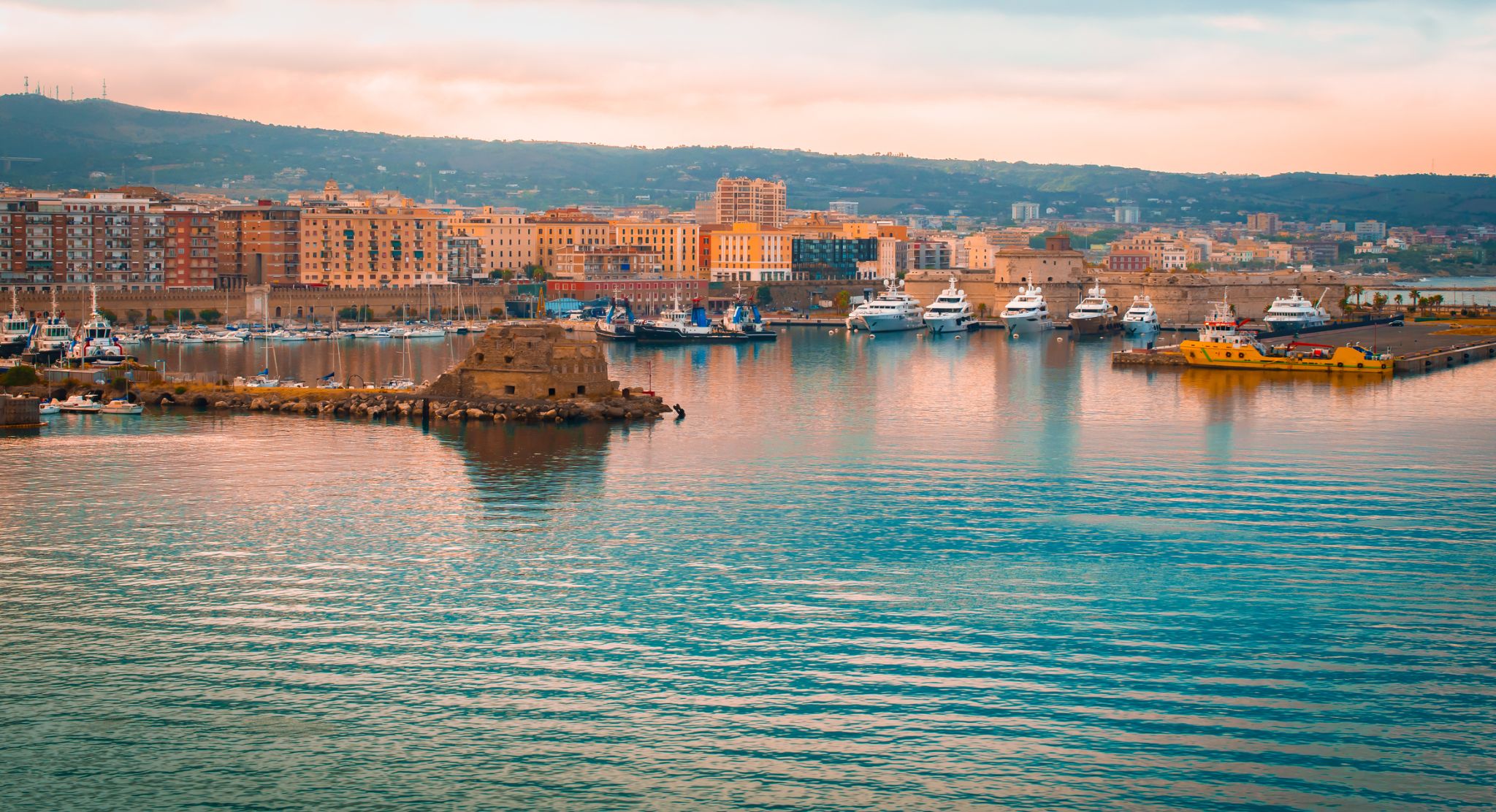
Rzym – jedno z najstarszych miast świata, niegdyś stolica Cesarstwa Rzymskiego, dziś stolica Włoch. Położony na siedmiu wzgórzach nad Tybrem, zachwyca pięknem i majestatem, którego nie da się oddać słowami – trzeba tu być. Każda rzeźba, fontanna czy budowla to dzieło sztuki pozostawione przez dawnych mistrzów. Najsłynniejsze atrakcje, które przyciągają turystów, to Koloseum – miejsce dawnych walk gladiatorów, Fontanna di Trevi, Schody Hiszpańskie, Bazylika św. Piotra – największy kościół Europy, a także Fora Cesarskie i Forum Romanum.
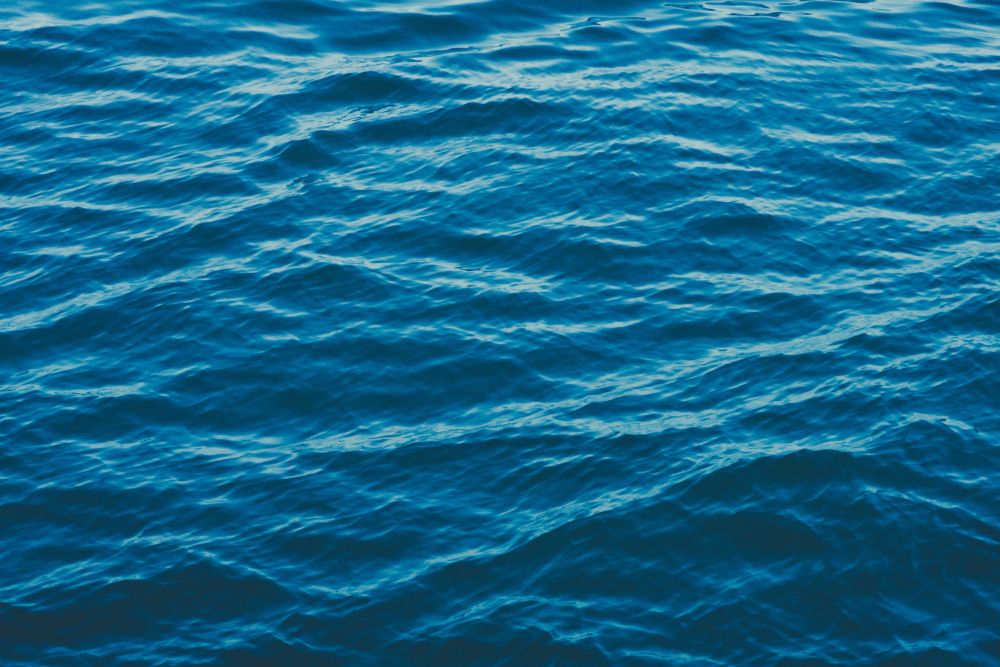
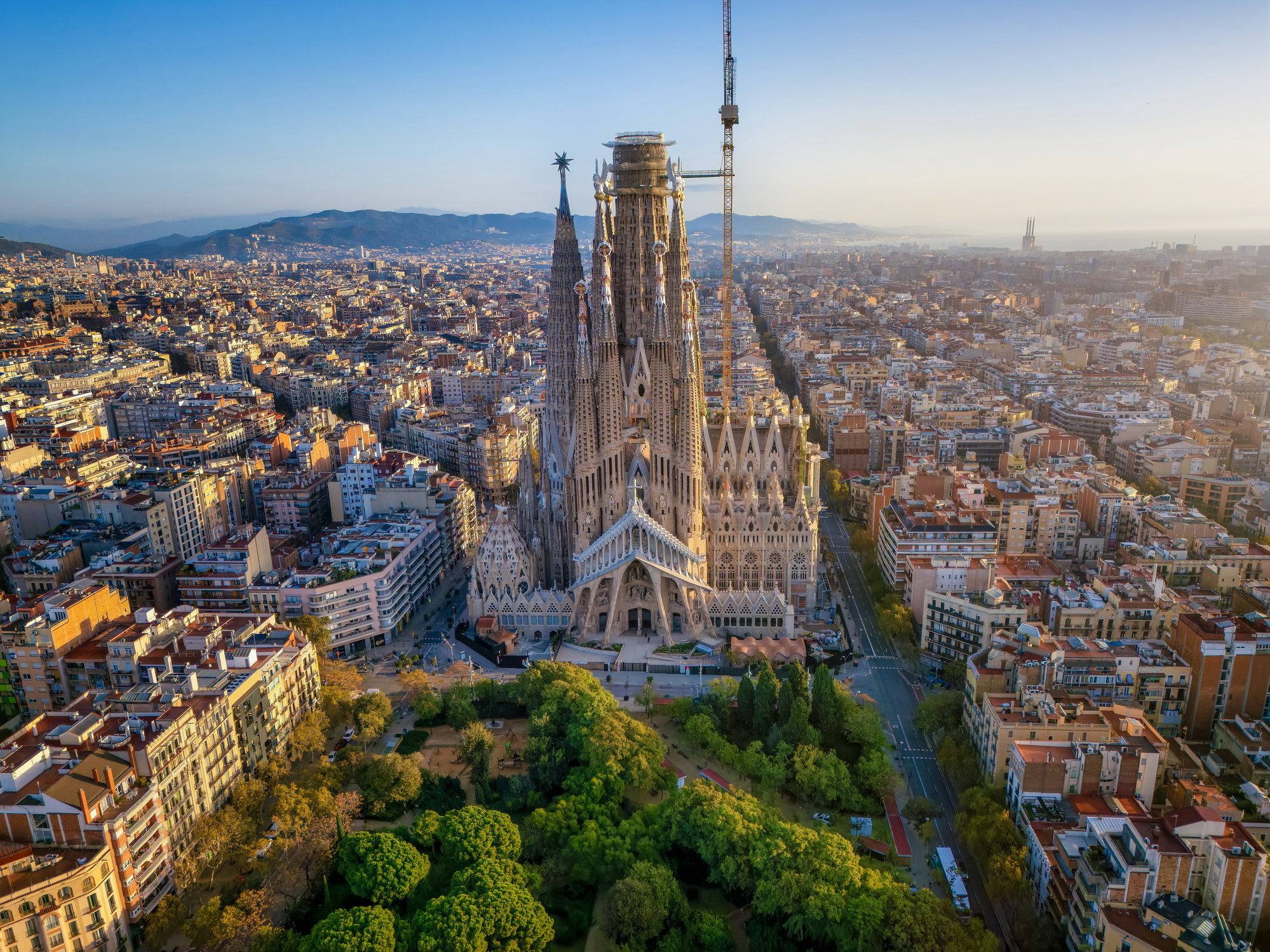
Mając reputację jednego z najatrakcyjniejszych miast w Europie, Barcelona świętuje swoją rolę stolicy Katalonii. Kosmopolityczna i międzynarodowa atmosfera miasta sprawia, że jest to ulubione miejsce wielu ludzi na całym świecie. Miasto jest szczególnie znane ze swojej architektury i sztuki – podróżnicy z całego świata przybywają, aby zobaczyć słynną Sagrada Familia i inne modernistyczne zabytki zaprojektowane przez Gaudiego.
Barcelona to miasto z licznymi i oryginalnymi możliwościami spędzania czasu wolnego, które sprawiają, że chcesz tu wracać. Położona na wybrzeżu Morza Śródziemnego Barcelona słynie z arcydzieł Gaudiego i architektury secesyjnej: jest jednym z najbardziej stylowych miast europejskich.
Miasto jest ośrodkiem nowych trendów w świecie kultury, mody i gastronomii. Dopełnieniem kreatywności artystów i projektantów jest ostrożne podejście do tradycyjnych placówek. Barcelona łączy w sobie urok i spokój historycznego centrum z awangardowymi nowoczesnymi dzielnicami i intensywnym tempem życia w jednym z najczęściej odwiedzanych miast na świecie.

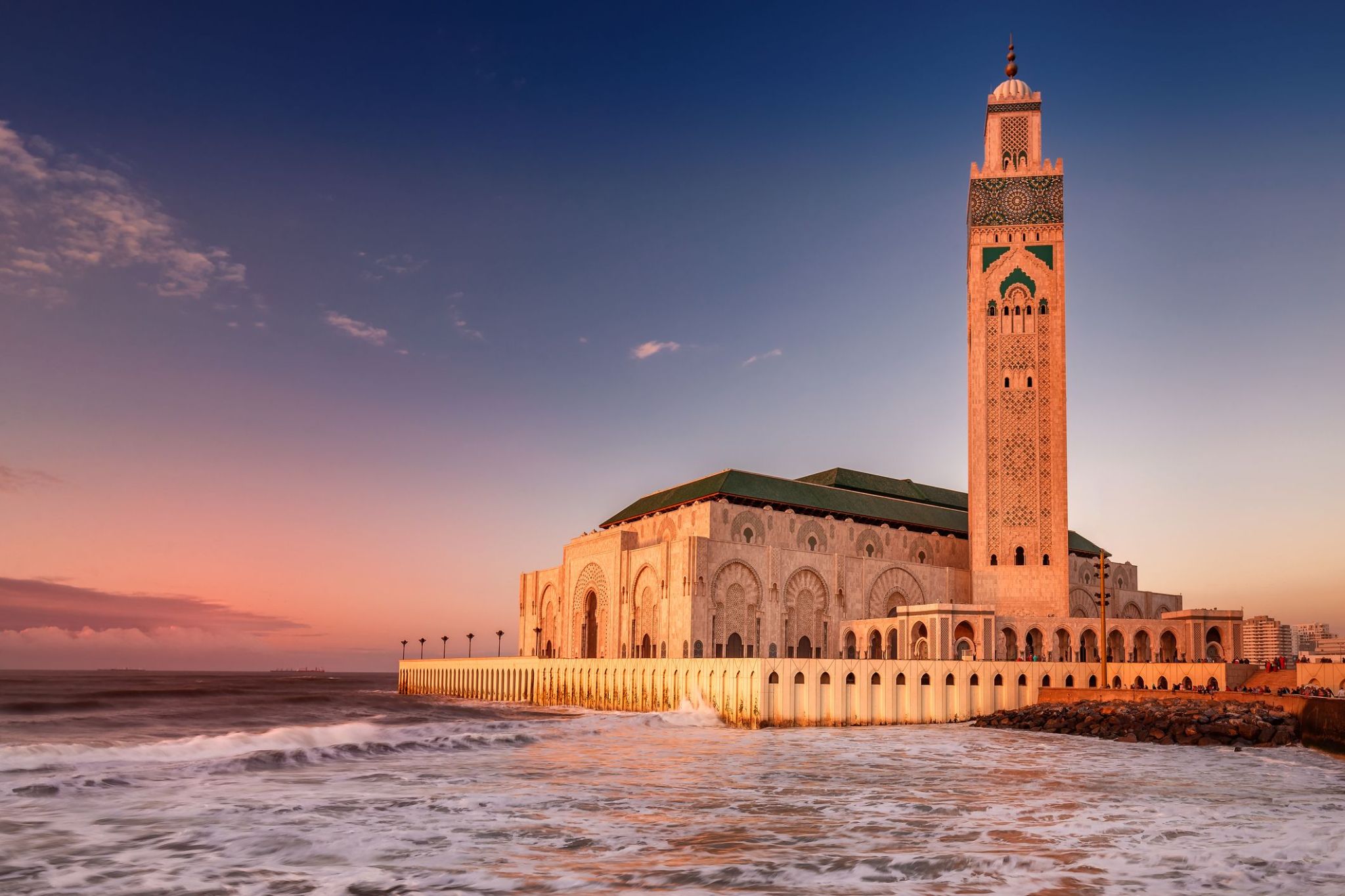
Casablanca położona jest w centralno-zachodniej części Maroka i graniczy z Oceanem Atlantyckim. Jest największym miastem Maroka. To także największe miasto regionu Maghrebu, a także jedno z największych i najważniejszych miast Afryki pod względem gospodarczym i demograficznym.
Casablanca jest głównym portem Maroka i jednym z największych centrów finansowych na kontynencie. Według szacunków z 2014 roku miasto liczy około 3,35 miliona mieszkańców na obszarze miejskim i ponad 6,8 miliona w regionie Casablanca-Settat. Casablanca uważana jest za gospodarcze i biznesowe centrum Maroka, podczas gdy polityczną stolicą kraju pozostaje Rabat.
Wiodące marokańskie firmy oraz liczne międzynarodowe korporacje działające w kraju mają swoje siedziby główne i główne zakłady przemysłowe w Casablanca. Najnowsze dane przemysłowe pokazują, że Casablanca zachowuje swoją historyczną rolę głównej strefy przemysłowej kraju. Port w Casablanca jest jednym z największych sztucznych portów na świecie i drugim co do wielkości portem w Afryce Północnej po Tanger-Med, 40 km na wschód od Tangeru. Casablanca jest także główną bazą morską Królewskiej Marynarki Wojennej Maroka.

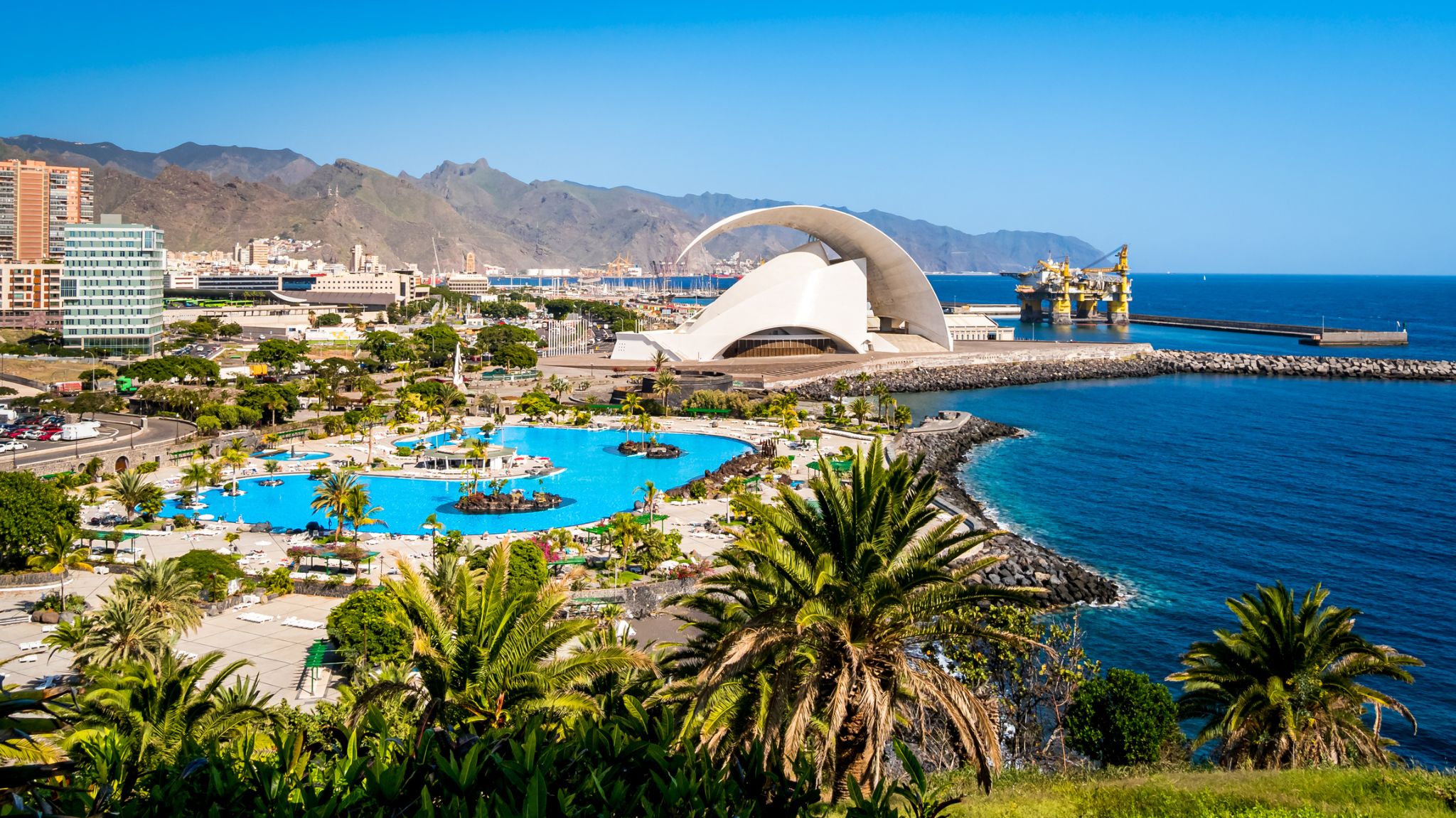






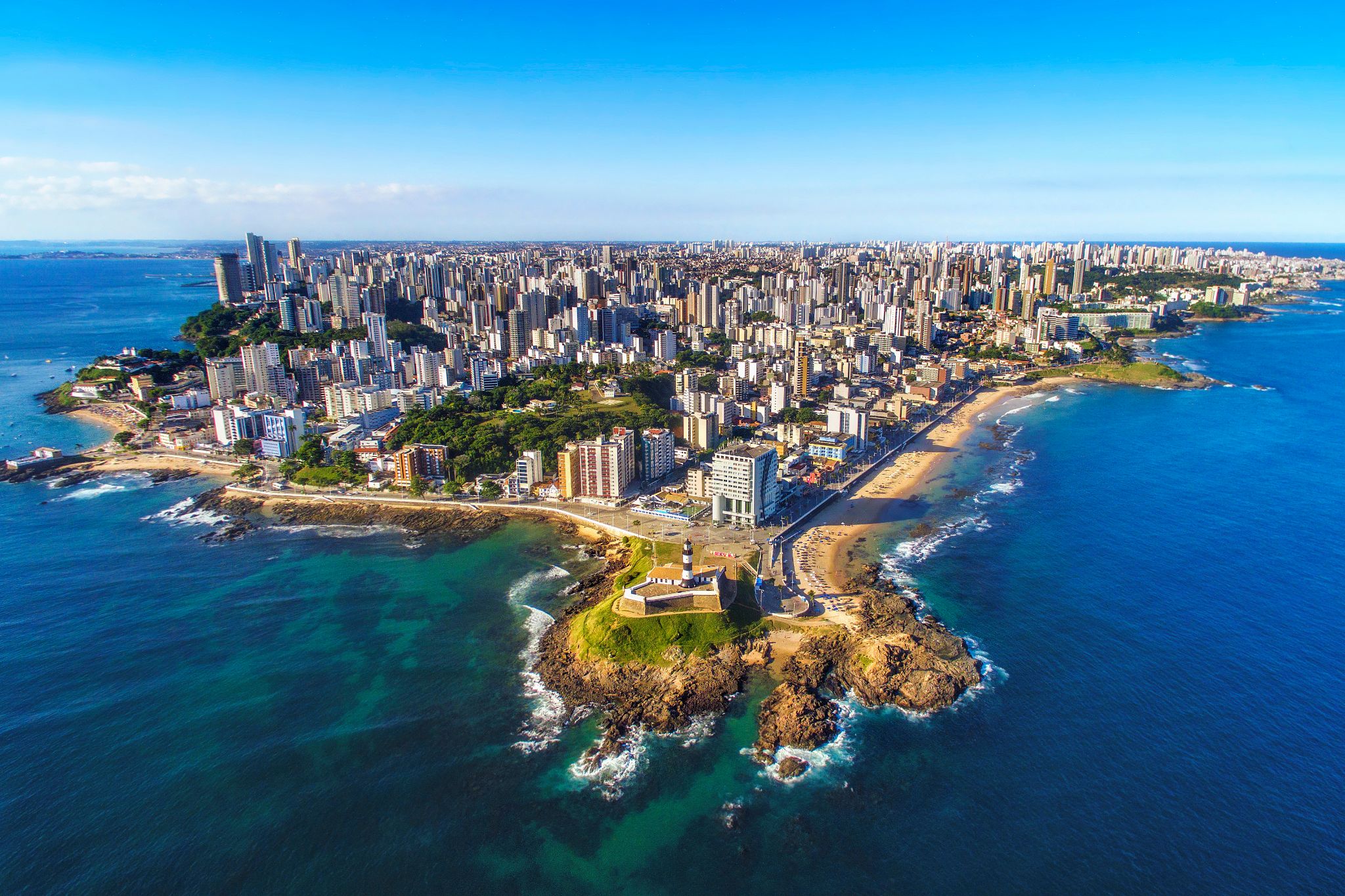
Salvador is the capital of Bahia state and was formerly the first capital of Brazil. Salvador is known for its endless number of churches, as well as for being a land of majestic fortresses. After visiting these places, it is also worth taking a look at the Chapada Diamantina National Park – the most interesting natural park in Brazil. In Salvador, there reigns an atmosphere of joy, revelry, and holidays – this is due to the fact that the local population was influenced by Africa. In Salvador, you can always admire the natural beauty of this area. You will be enchanted by the sensuality of this land, and you will be able to discover a piece of its mysterious power.

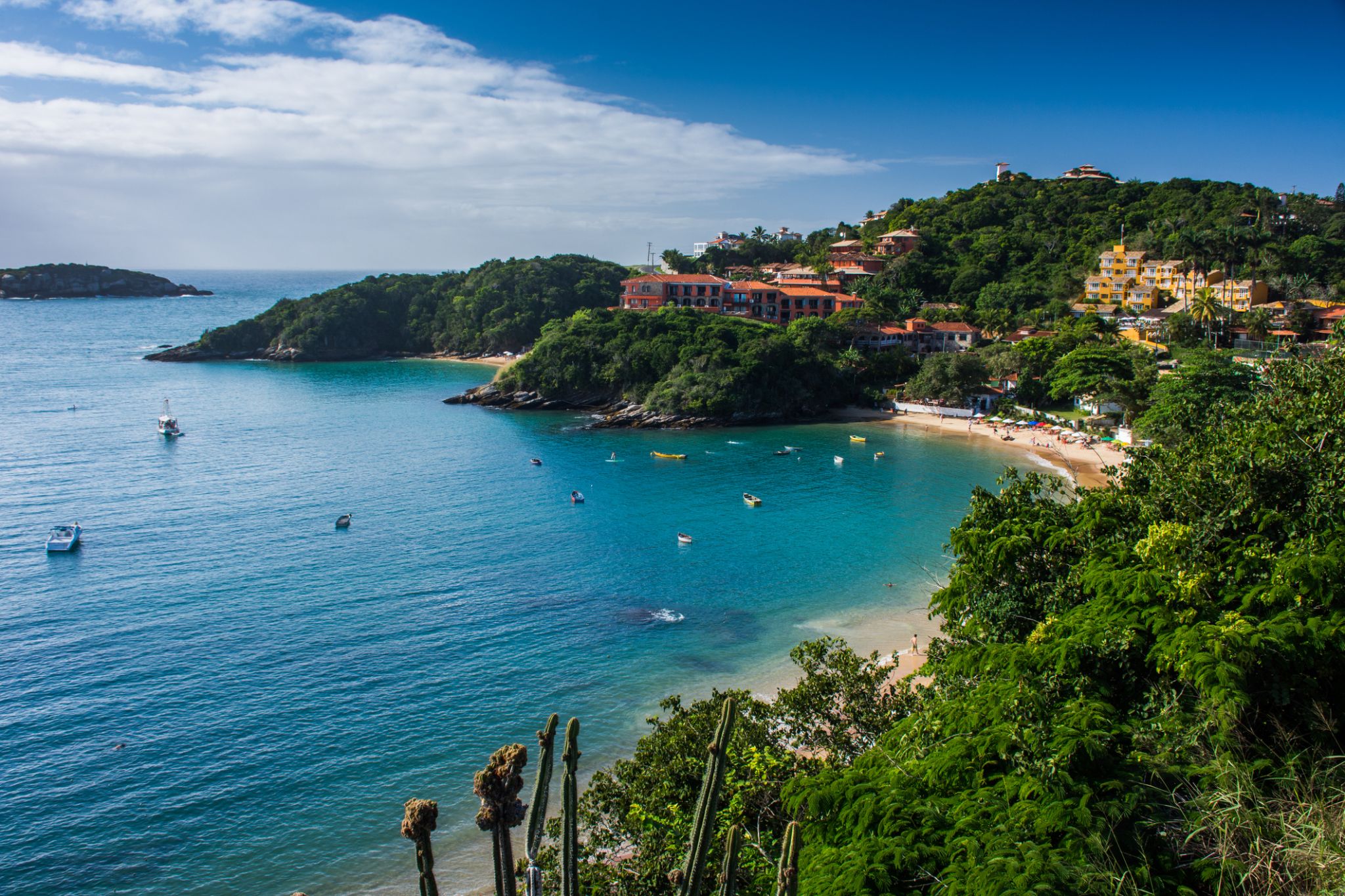
Armação dos Búzios, często nazywane po prostu Búzios, to nadmorskie miasteczko i gmina w stanie Rio de Janeiro w Brazylii. W 2012 roku liczyło 23 463 mieszkańców i zajmowało powierzchnię 69 km². Dziś Búzios jest popularnym miejscem wypoczynku, szczególnie wśród Brazylijczyków i Argentyńczyków.
Na początku XX wieku Búzios było niemal nieznaną wioską rybacką. Pozostało takie aż do 1964 roku, kiedy to francuska aktorka Brigitte Bardot odwiedziła Búzios. Od tego czasu miejsce to stało się popularne wśród wyższych sfer Rio de Janeiro, pragnących uciec od miejskiego zgiełku i cieszyć się ponad 23 plażami, które oferuje półwysep. Miasto rozwinęło się w międzynarodowy cel turystyczny.
Dziś półwysep oferuje spokój, bezpośredni kontakt z naturą i malownicze widoki. Plaże po zachodniej stronie oferują spokojne, przejrzyste wody, podczas gdy te po wschodniej stronie, zwrócone ku otwartemu morzu, są bardziej dzikie i przyciągają surferów oraz entuzjastów sportów wodnych. Azeda, Ferradura, João Fernandes i Armação to jedne z najpopularniejszych plaż w mieście. Wieczorem główna ulica Búzios, Rua das Pedras, oferuje aktywne życie nocne oraz szeroki wybór sklepów i restauracji.
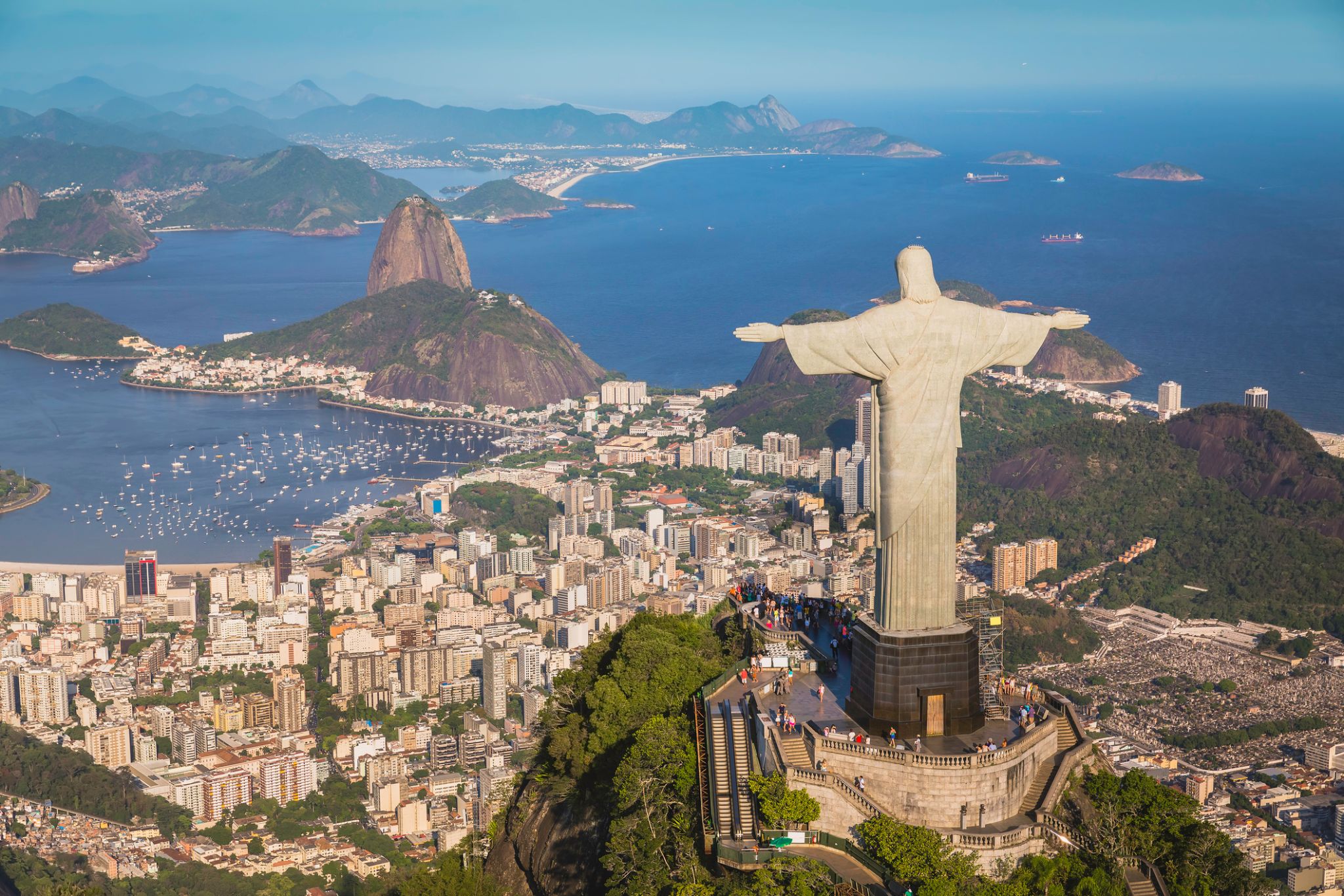
Rio de Janeiro is the second-most populous municipality in Brazil and the sixth-most populous in the Americas. The metropolis is anchor to the Rio de Janeiro metropolitan area, the second-most populous metropolitan area in Brazil and sixth-most populous in the Americas. Rio de Janeiro is the capital of the state of Rio de Janeiro, Brazil's third-most populous state. Part of the city has been designated as a World Heritage Site, named "Rio de Janeiro: CariocaLandscapes between the Mountain and the Sea", by UNESCO on 1 July 2012 as a Cultural Landscape.
Founded in 1565 by the Portuguese, the city was initially the seat of the Captaincy of Rio de Janeiro, a domain of the Portuguese Empire. Later, in 1763, it became the capital of the State of Brazil, a state of the Portuguese Empire. In 1808, when the Portuguese Royal Court transferred itself from Portugal to Brazil, Rio de Janeiro became the chosen seat of the court of Queen Maria I of Portugal, who subsequently, in 1815, under the leadership of her son, the Prince Regent, and future King João VI of Portugal, raised Brazil to the dignity of a kingdom, within the United Kingdom of Portugal, Brazil, and Algarves. Rio stayed the capital of the pluricontinental Lusitanian monarchy until 1822, when the War of Brazilian Independence began. This is one of the few instances in history that the capital of a colonising country officially shifted to a city in one of its colonies. Rio de Janeiro subsequently served as the capital of the independent monarchy, the Empire of Brazil, until 1889, and then the capital of a republican Brazil until 1960 when the capital was transferred to Brasília.